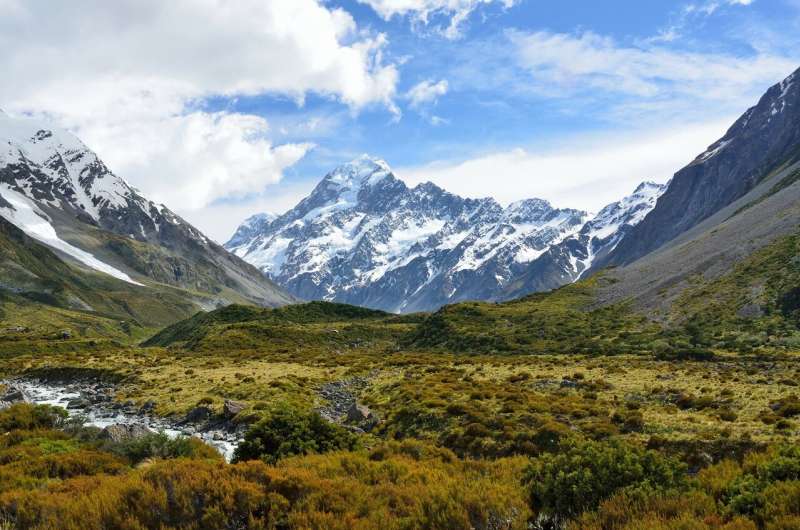Seismic activity of New Zealand's alpine fault more complex than suspected

A rupture along the full length of the fast-slipping Alpine Fault on New Zealand's South Island poses the largest potential seismic threat to the southern and central parts of the country. But new evidence of a 19th century earthquake indicates that in at least one portion of the fault, smaller earthquakes may occur in between such large rupture events.
The findings published in the Bulletin of the Seismological Society of America suggest that some places along the fault, particularly around the towns of Hokitika and Greymouth, could experience strong ground shaking from Alpine fault earthquakes more often than previously thought.
The best paleoseismic evidence to date suggests the southern and central sections of the Alpine Fault, at the boundary separating the Australian and Pacific tectonic plates, typically rupture during very large full-section earthquakes of magnitude 7.7 or larger. The last such earthquake took place in 1717.
After trenching along the fault at the Staples site near the Toaroha River, however, Robert Langridge of GNS Science and colleagues uncovered evidence of a more recent earthquake along the northeastern end of the fault's central portion. Radiocarbon dating places this earthquake between 1813 and 1848.
"One of the real challenges with the Alpine Fault—because it is so bush-covered—is actually finding sites that have been cleared and therefore can be studied," said Langridge. "Once we started working there [at the Staples site] the story really grew in large part because of the richness of dateable organic material in the trenches."
The four most recent earthquakes uncovered by the researchers at the site range in dates from 1084 to 1848. The events were confirmed by data collected from other nearby trenching sites and from geological deposits called turbidites, which are sediments shaken loose into a body of water by seismic activity, in lakes along the central section of the Alpine fault.
The most recent earthquake could represent a "partial-section" rupture of only the central portion of the Alpine fault, a rupture of the fault's northern section that continued southwest into the central segment, or even triggered slip from a rupture along the nearby Marlborough Fault System. Langridge and colleagues said that there isn't enough evidence yet to favor one of these scenarios over the others.
However, the findings do suggest that seismic activity on the Alpine Fault is more complex than suspected, particularly along its northern reaches where the plate boundary transitions into another fault zone.
"One of the outcomes of this study is that you should expect a shorter recurrence interval of strong shaking at fault section ends," Langridge said. "Because of the recurrence times of earthquakes though, you obviously have to wait a long time to see the effects of such fault behavior."
"That's why paleoseismology is a vital tool in understanding faults," he added, "because otherwise we'd have only short insights into the past."
The Alpine Fault is sometimes compared with California's San Andreas Fault, being another fast-moving strike slip fault near a plate boundary. Langridge said researchers in California and New Zealand have a long history of earthquake science collaboration and are learning from each other about the treatment of active faults and fault segmentation for seismic hazard models.
"The San Andreas Fault, being on the opposite side of the Pacific plate, it is like our distant brother or whanau—family," said Langridge.
More information: Robert M. Langridge et al, Reconciling an Early Nineteenth-Century Rupture of the Alpine Fault at a Section End, Toaroha River, Westland, New Zealand, Bulletin of the Seismological Society of America (2020). DOI: 10.1785/0120200116
Journal information: Bulletin of the Seismological Society of America
Provided by Seismological Society of America


















